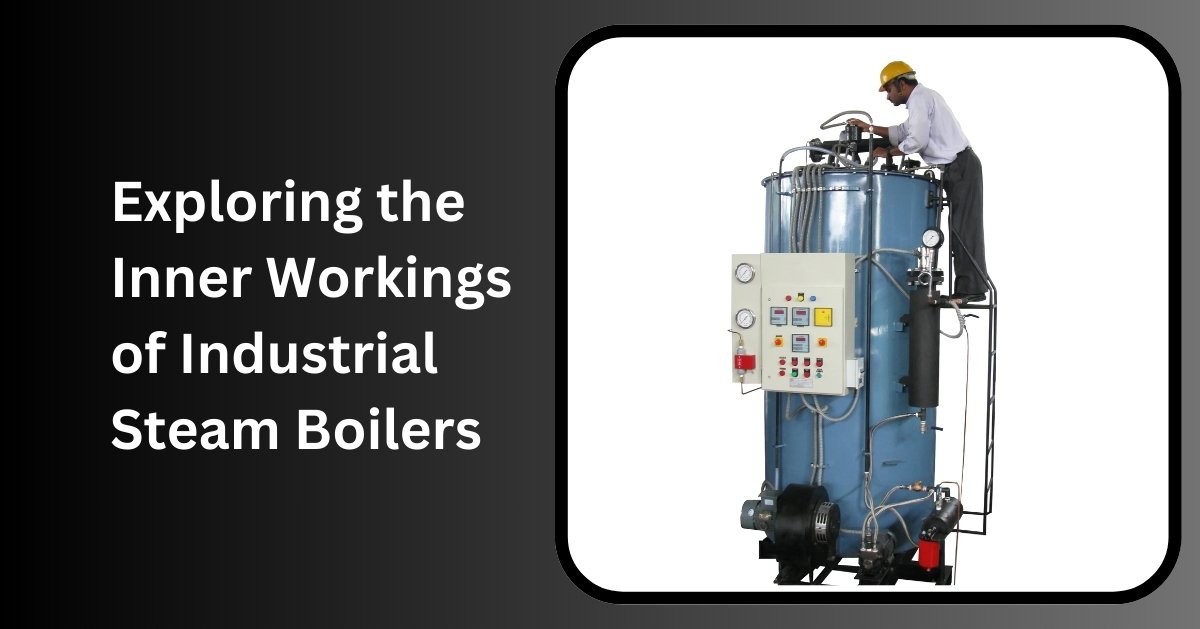Industrial steam boilers serve as the unsung heroes in various industries, working tirelessly behind the scenes to generate steam for numerous applications, from manufacturing goods to generating electricity. This comprehensive guide simplifies the complexities of industrial steam boilers, highlighting their importance and functionality.
Table of Contents
ToggleWhat is an Industrial Steam Boiler?
Imagine a large pot on a stove, but instead of boiling water for cooking, it’s producing steam for industrial purposes. That’s essentially what an industrial steam boiler does. It is a specialized vessel designed to heat water and produce steam, which is then used for heating, generating electricity, and running machinery in factories and plants.
Choosing a Reliable Manufacturer
The efficiency and reliability of industrial steam boilers depend significantly on the quality of their manufacturing. For those seeking a dependable steam boiler manufacturer in Dubai, consider Ross Thermal. Known for their commitment to innovation and customer satisfaction, they stand out in the market.
Importance of Industrial Steam Boilers
Industrial steam boilers are crucial for modern industry, silently powering numerous processes that keep the world running smoothly. They play a vital role in boosting productivity, maintaining product quality, and reducing environmental impact through efficient use of various fuels and advanced technologies.
How Do Industrial Steam Boilers Work?
The magic of industrial steam boilers lies in their ability to transform water into steam using heat. Here’s a simplified explanation of the process:
a] Combustion: Inside the boiler, fuel such as natural gas, oil, or coal is burned in a combustion chamber.
b]Heat Transfer: The heat generated from burning the fuel warms up the water in pipes or tubes surrounding the combustion chamber.
c] Steam Production: As the water heats up, it turns into steam, which can then be utilized for various industrial purposes.
Components of an Industrial Steam Boiler
Industrial steam boilers are complex machines comprising several crucial parts:
a] Combustion Chamber: The area where fuel is burned to generate heat.
b] Heat Exchanger: Transfers heat from the combustion gases to the water.
c] Boiler Shell: The robust outer casing that houses all components.
d] Steam Drum: Acts as a reservoir for the produced steam.
e] Safety Valves: Release excess pressure to prevent accidents.
f] Controls and Instrumentation: Monitor and adjust the boiler’s operations to ensure smooth functioning.
Types of Industrial Steam Boilers
There are different types of industrial steam boilers, with the most common being:
a] Fire Tube Boilers: Feature water-filled tubes heated by hot gases. Ideal for smaller operations.
b] Water Tube Boilers: Water flows through tubes surrounded by hot gases. Suitable for large-scale applications, such as power plants.
Applications of Industrial Steam Boilers
Industrial steam boilers are versatile tools used across various industries, including:
a] Heating: Providing warmth for buildings, heating water, and powering radiant systems.
b] Power Generation: Producing electricity in power plants by driving turbines with steam.
c] Manufacturing: Supplying steam for production processes in industries such as automotive and textile.
d] Food Processing: Sterilizing equipment, cooking food, and pasteurizing dairy and juices.
e] Pharmaceutical: Ensuring cleanliness and sterilization in manufacturing processes.
Conclusion
Industrial steam boilers are pivotal in transforming water into steam to power countless industrial processes. By grasping their basic principles and components, one can appreciate their critical role in enhancing productivity and sustainability across various industries. As technology advances, these boilers will continue to evolve, offering even greater efficiency and environmental benefits.



